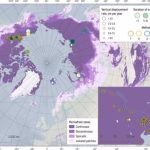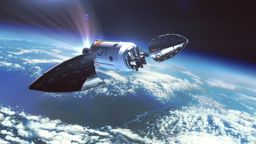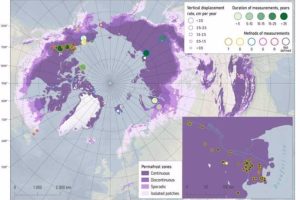It’s an image we should have seen two or three years ago. But better late than never. The European Space Agency’s (ESA) Ariane 6 rocket has successfully completed its first missionEurope already has its launcher.
The Ariane 6 is a next-generation launch rocket. Although it cannot return to Earth and land on its own, like SpaceX’s Falcon 9s, it is one of the most environmentally friendly rockets in existence. And also, much more versatile.
It has been delayed for years due to design problems. After the retirement of Ariane 5, Europe has suffered two years of wandering in the desert, during which it has been forced to hire SpaceX and NASA to put its Galileo satellites into orbit. Fortunately, the nightmare is over.
First flight of the Ariane 6 rocket
Several Spanish companies have been involved in the construction of Ariane 6, including Sener, the Spanish subsidiary of Airbus, and Thales Alenia Space.
The launch rocket measures 63 meters high, by 5.4 meters wide.. It can carry a load of 6,500 kilos, mainly satellites and scientific experiments.
In this video you can see the spectacular takeoff of its first flightwhich took place a few hours ago in French Guiana:
Its main advantage over SpaceX is its versatilityIt has the capacity to load and release different types of satellites, ships and experiments into space, at a cost of 70 million euros for each launch.
In this first inaugural flightcarries several small satellites and scientific experiments from nine countries. Among them is the 1U 3Cat-4 satellite cube from the Polytechnic University of Catalonia.
The success of the mission allows Europe to breathe a sigh of relief, because will no longer have to depend on the United States to put satellites into orbitwhich entailed enormous financial costs and security problems.
Although the United States is an ally, Europe manufactures its top-secret Galileo satellites using its own technology, which is more advanced than the American GPS. Launching from the United States increases the risk of industrial espionage, especially if the rocket fails.
This success of the European Space Agency is also a success for Spainas our country is the fourth largest investor in the rocket, out of the 13 countries participating. France contributes the largest share, 55% of the budget, followed by Germany (20%), Italy (7.7%) and Spain (4.7%).
Ariane 6’s first flight has been a successand Europe breathes a sigh of relief. It regains its space independence from the United States and Russia.
Known how we work in Computerhoy.
Tags: European Union

![[Img #74851]](https://thelatestnews.world/wp-content/uploads/2025/01/The-metaphors-we-use-about-life-150x150.jpg)











![[Img #74851]](https://thelatestnews.world/wp-content/uploads/2025/01/The-metaphors-we-use-about-life-300x200.jpg)


Add Comment